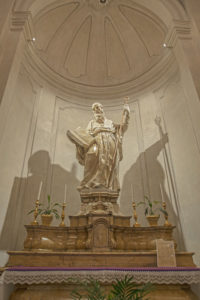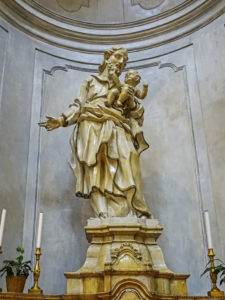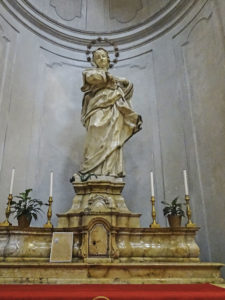Inside the church the decorative display catches our eye, the only element of colour apart from the two-tone floor in the white sacred space.
The main altar, which occupies the majestic frontal
apse
, is dedicated to St. Agatha, flanked by two putti.
The statue, made of marble stucco, a painting technique that imitates marble, is portrayed in ecstasy, its eyes turned skywards.
The other four altars, created by
Giovanni Battista Marino
, are dedicated to the martyr St. Euplius, a fellow citizen of St. Agatha, St. Benedict, St. Joseph and the Child and the Immaculate Conception.




The altars are flanked by some other works of the highest artistic, evocative and symbolic value. Among these is the wooden crucifix by Ignazio Carnazza completed in 1696.
 The work rests on a yellow marble background from which a red marble decoration continues downwards, depicting a fabric cloth with fringes and bows.
The work rests on a yellow marble background from which a red marble decoration continues downwards, depicting a fabric cloth with fringes and bows.
This element, though made of hard, cold stone, has such a realistic appearance that it appears soft and animated in the eyes of the beholder.
The work was commissioned by the governing abbess Giuseppa Maria Scammacca. Below it is the nuns’ “grating of professions”, a work by the Bonaventura brothers.